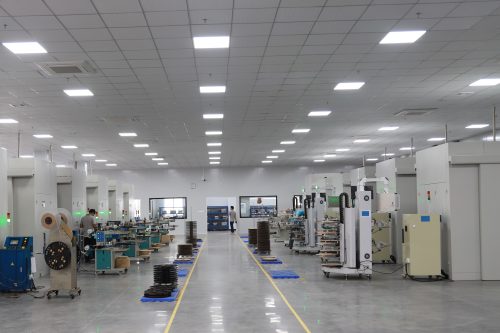Terminal stamping is an important part of connector manufacturing, involving a variety of materials, equipment and technical requirements. The stamping process plays a decisive role in the performance and quality of the final product.

Material comparison
The materials commonly used for terminal stamping mainly include copper, aluminum and alloys. Different materials have their own characteristics in terms of conductivity, strength and corrosion resistance.
Copper
- Conductivity : The conductivity is about 58 MS/m, suitable for high current applications.
- Tensile strength : about 210 MPa, with good mechanical strength.
- Corrosion resistance : Superior, suitable for harsh environments.
Aluminum
- Conductivity : The conductivity is about 37 MS/m, suitable for low to medium power applications.
- Tensile strength : about 90 MPa, light but low strength.
- Corrosion resistance : Good, surface treatment is required to improve performance.
Alloy Material
- Conductivity : The conductivity can reach 55 MS/m, combining the advantages of copper and aluminum.
- Tensile strength : about 180 MPa, higher than aluminum but lower than pure copper.
- Corrosion resistance : Good, suitable for many applications.
Technical requirements
The technical requirements in the stamping process involve mold design, process parameters and processing accuracy. Different materials and design requirements affect the selection of stamping parameters.
Mold design
- Tolerance requirements : Usually within ±0.05 mm to ensure good fit between stamping parts and other components.
- Material adaptability : The mold needs to adapt to the characteristics of different materials, especially the hardness difference between copper and aluminum.
Process parameters
- Stamping speed : The recommended speed for copper material is 20-30 times/minute, for aluminum material is 30-50 times/minute, and for alloy material it is in between.
- Punching pressure : The punching pressure for copper is usually set at 250-400 kN, aluminum is about 150-250 kN, and alloys are 200-300 kN.
Processing accuracy
- Dimensional accuracy : The standard requirement is ±0.05 mm, and key locations such as connection points require higher accuracy, reaching ±0.02 mm.
- Surface roughness : Ra ≤ 0.8 μm is generally required to ensure good contact performance.
Detection Methods
Product inspection after terminal stamping is crucial. Common inspection methods include appearance inspection, dimensional measurement and electrical performance test. Appearance inspection ensures that there are no obvious defects on the product surface. Dimensional measurement is performed using a caliper or a three-dimensional coordinate measuring machine to ensure compliance with design specifications. Electrical performance testing verifies conductivity and insulation to ensure product reliability in actual applications.
KONNRA connectors
KONNRA Connectors has a high-quality stamping workshop with its own production capacity. The company focuses on technological innovation, adopts advanced equipment and a strict quality management system to ensure that every product meets high standards. Rich industry experience enables KONNRA Connectors to provide customized solutions according to customer needs, ensuring quality and quantity, and has won the trust of customers.










